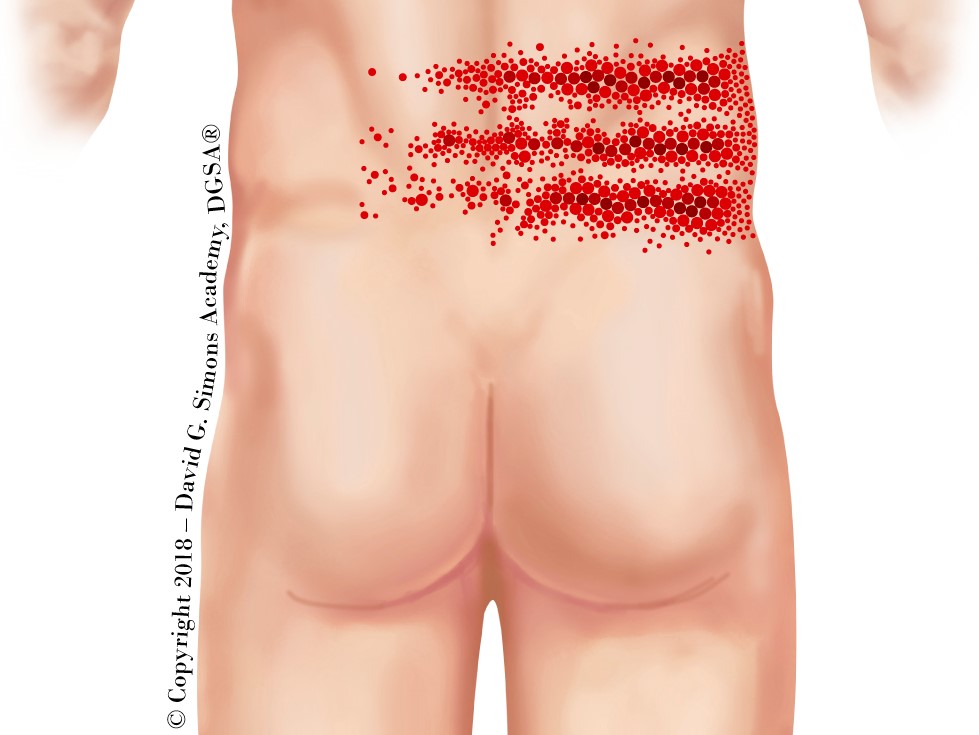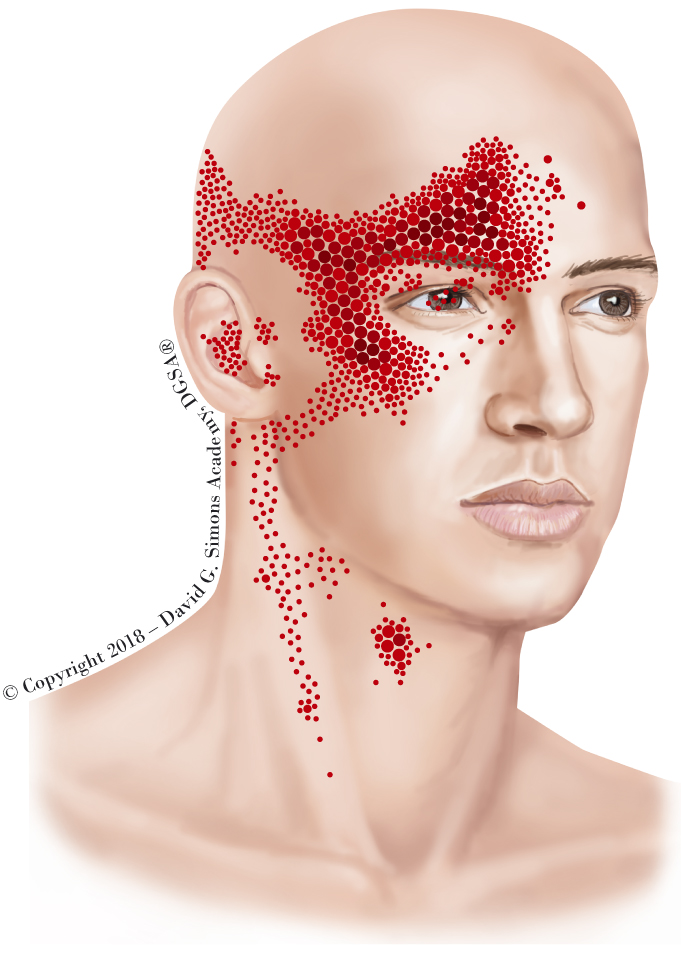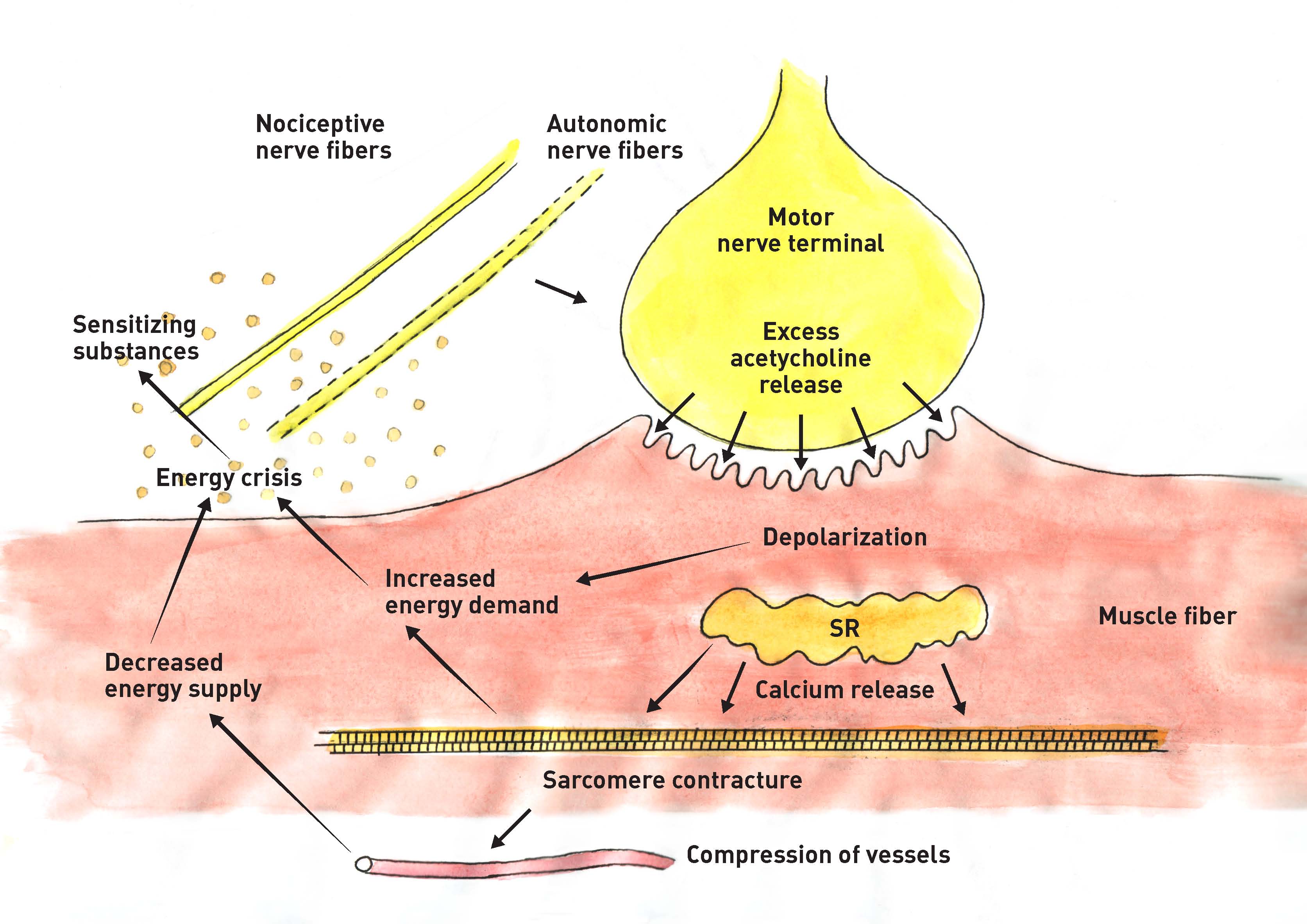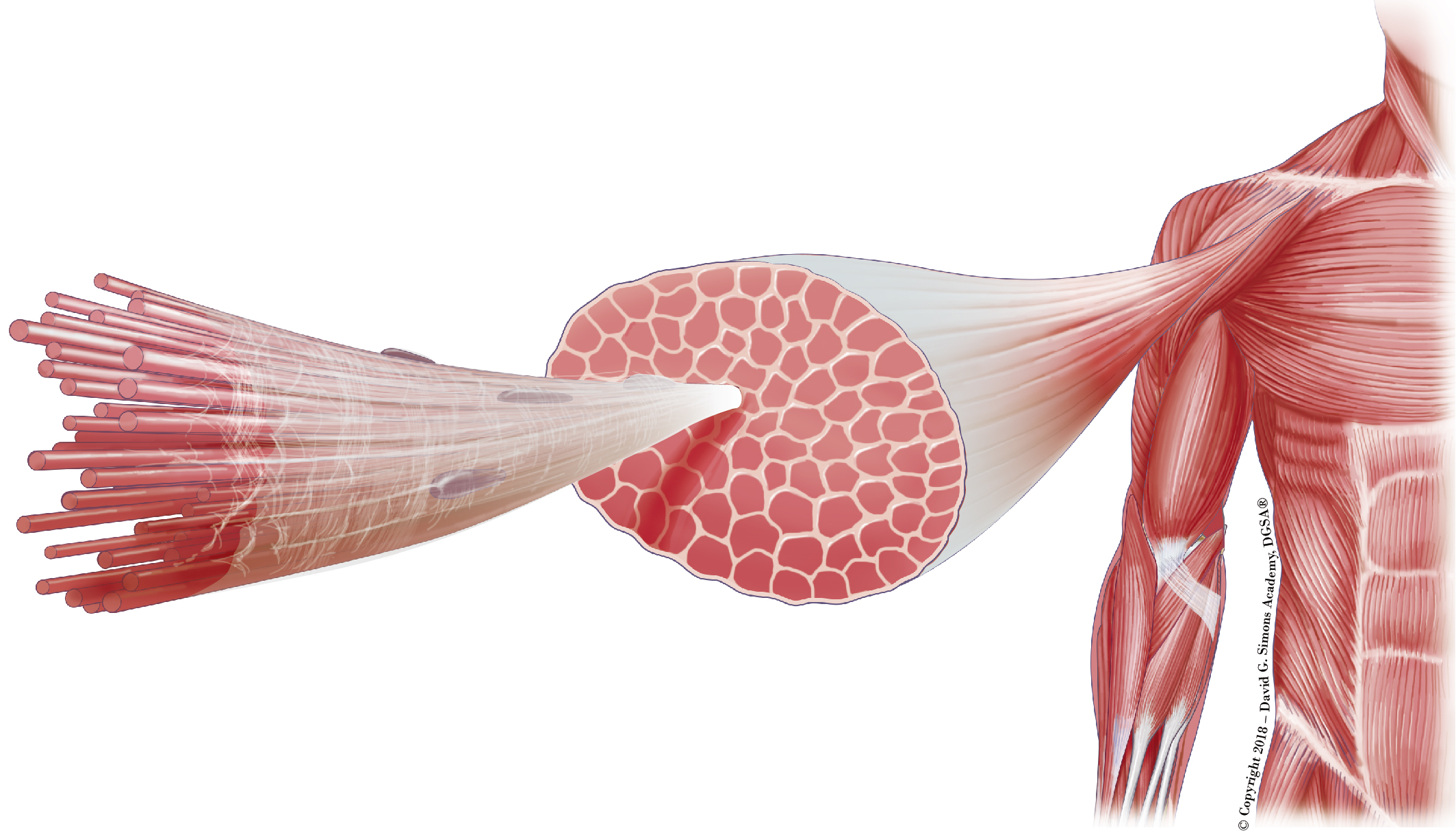About Trigger Points
It was in 1942, when the term myofascial trigger point was first published by Janet Travell. She became later a White House physician and started to collaborate with David G. Simons. In 1983 they published the first edition of "Myofascial Pain and Dysfunction - The Trigger Point Manual". This book was a breakthrough in the world of rheumatology, orthopedics and physiotherapy. It changed the understanding and treatment approach towards chronic pain.
A myofascial trigger point is defined as a hypersensitive spot in the skeletal muscle, within a taut band. Myofascial trigger points can be found anywhere on the body and are one of the most common causes for acute and chronic musculoskeletal pain, also known as myofascial pain.
Referred Pain of Trigger Points
Trigger points refer pain elsewhere to adjacent or remote areas. For example low back pain may be related to trigger points in the abdominal muscles, while headaches can be related to trigger points in the neck muscles. The triggering of referred pain is a characteristic feature of myofascial trigger points and forms the basis for its name "Trigger Point ".


Clinically a Myofascial Trigger Point is defined by the presence of the following diagnostic criteria:
- the taut band
- localized increased sensitivity to pressure within the taut band
- referred pain during manual stimulation or needling of the MTrP
- and the local twitch response during manual stimulation or needling of the MTrP
The "Energy Crisis Theory" for Myofascial Trigger Points
According to the "Energy Crisis Theory", sustained muscle contractions can lead to poor circulation in a specific area of the muscle, due to blood vessels being compressed, preventing adequate oxygen supply to the muscle, and not allowing it to heal properly. If this condition becomes chronic, the muscle may further contract and become painful. One important cause for sustained muscle contraction is muscular overload, such as by an acute injury or overuse. This can cause microlesions in the sarcoplasmatic reticulum (SR). One of the functions of the sarcoplasmatic reticulum is to transport and store calcium ions. Any lesion in the sarcoplasmatic reticulum system may lead to excessive release of calcium ions and thus sustained contractions of muscle fibers. This is because calcium triggers muscle fiber contraction. Multiple contractions of this kind in a specific region in the muscle, may form a taut band, that is easily palpable by trained practitioners.
The Role of Fascia in Trigger Points
The endomysium is a wispy layer of connective tissue that ensheaths each individual muscle fiber. It also contains capillaries and nerves. It overlies the muscle fiber's cell membrane which is also called the sarcolemma. Endomysium is the deepest and smallest component of muscle connective tissue. A bundle of skeletal muscle fibers forms a muscle fascicle, which is a surrounded by the perimysium. The endomysium combines with the perimysium and epimysium to create the collagen network within the muscle, which is often summarized as the fascia. The sensitizing substances, within the trigger point, which are due to the decreased oxygen supply and the decreased intramuscular mobility, affect the connective tissue. It can become painful and forms adhesions and therefore perpetuates the contraction knots and the taut band within the muscle. If we take the role of the connective tissue into account, we could expand the definition of myofascial trigger points as follows:
A myofascial trigger point is defined as a hypersensitive spot in the skeletal muscle, within a taut band, surrounded by a dysfunctional connective tissue.


